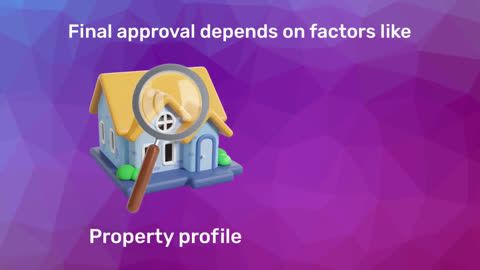The Indian income tax system underwent a significant transformation with the introduction of the new tax regime. The old tax regime and the new tax regime offer different benefits and features, which can make tax planning a bit challenging for taxpayers. An "old regime vs new regime calculator" can be a valuable tool to help individuals decide which tax regime suits their financial situation better. This article will provide a comprehensive guide on the old and new tax regimes, their features, benefits, and how to use a calculator to make an informed choice.
What is the old tax regime?
The old tax regime is the traditional method of calculating income tax in India, which allows taxpayers to claim various deductions and exemptions to reduce their taxable income. This regime encourages taxpayers to invest in specific financial products and save money through various schemes.
Features of old tax regime
- Deductions and exemptions: The old tax regime offers numerous deductions under various sections of the Income Tax Act, such as Section 80C, 80D, and 24(b).
- Investment incentives: Encourages investments in financial products like ELSS, PPF, NPS, and life insurance.
- Tax-saving instruments: Taxpayers can reduce their taxable income by investing in approved schemes and instruments.
Benefits of old tax regime
- Higher deductions: Allows taxpayers to claim higher deductions and reduce their taxable income significantly.
- Investment benefits: Promotes long-term savings and investments through tax-saving instruments.
- Financial security: Encourages the purchase of financial products that provide future security, such as health insurance and life insurance.
What is the new tax regime?
The new tax regime, introduced in the Union Budget 2020, offers a simplified tax structure with lower tax rates but fewer deductions and exemptions. This regime is designed to make tax filing easier and more transparent.
Features of new tax regime
- Simplified tax structure: Offers reduced tax rates across various income slabs.
- No deductions: Limits the availability of common deductions and exemptions.
- Straightforward compliance: Simplifies the tax filing process with fewer documents and claims.
Benefits of new tax regime
- Lower tax rates: Provides reduced tax rates, which can be beneficial for individuals with fewer deductions.
- Ease of filing: Simplifies the tax calculation process, making it easier for taxpayers to understand and comply with.
- Flexibility in financial planning: Offers flexibility as taxpayers are not required to invest in specific tax-saving instruments to reduce tax liability.
Comparison: Old regime vs new regime
Net Annual Taxable Income |
New tax regime (excluding the exemptions and deductions) |
Old tax regime (including the exemptions and deductions) |
Up to Rs. 2,50,000 |
Exempt |
Exempt |
Rs. 2,50,001 to Rs. 3,00,000 |
Exempt |
5% |
Rs. 3,00,001 to Rs. 5,00,000 |
5% |
5% |
Rs. 5,00,001 to Rs. 6,00,000 |
5% |
20% |
Rs. 6,00,001 to Rs. 9,00,000 |
10% |
20% |
Rs. 9,00,001 to Rs. 10,00,000 |
15% |
20% |
Rs. 10,00,001 to Rs. 12,00,000 |
15% |
30% |
Rs. 12,00,001 to Rs. 15,00,000 |
20% |
30% |
Above Rs. 15,00,000 |
30% |
30% |
How to use the old regime vs new regime calculator
An "old regime vs new regime calculator" is a helpful tool that allows taxpayers to compare their tax liabilities under both regimes. By inputting details of income, deductions, and exemptions, individuals can determine which regime is more beneficial for them.
Here’s a step-by-step guide to using the calculator:
- Enter annual income: Input your total annual income before any deductions or exemptions.
- Input deductions and exemptions: Under the old regime section, input the details of various deductions and exemptions you are eligible for, such as Section 80C, 80D, and interest on home loans under Section 24(b).
- Calculate tax liability: The calculator will compute your tax liability under both the old and new regimes based on the provided information.
- Compare results: Review the tax liabilities under both regimes to see which option results in lower tax payment.
- Choose the best regime: Based on the comparison, decide which regime is more advantageous for your financial situation.
Let's consider an example to illustrate the use of the calculator:
- Annual income: Rs. 12,00,000
- Deductions under old regime:
- Section 80C: Rs. 1,50,000
- Section 80D: Rs. 25,000
- Section 24(b) (Home loan interest): Rs. 2,00,000
Old regime calculation:
- Taxable income: Rs. 12,00,000 - Rs. 3,75,000 = Rs. 8,25,000
- Tax liability (using old regime slabs): Calculated based on the old tax rates and slabs.
New regime calculation:
- Taxable income: Rs. 12,00,000 (no deductions)
- Tax liability (using new regime slabs): Calculated based on the new tax rates and slabs.
After inputting these details, the calculator would show the tax liability under both regimes, helping the taxpayer to choose the better option.
Explore Bajaj Housing Finance Home Loan
Now that you know how to navigate the old and new tax regimes, it's time to make smart financial decisions. If you are planning to buy a home, consider the competitive interest rates and flexible repayment options offered by Bajaj Housing Finance Home Loan. Whether you are a first-time homebuyer or looking to refinance, Bajaj Housing Finance provides a range of benefits, including simple documentation, attractive interest rates, and flexible repayment tenures. Secure your dream home with a Bajaj Housing Finance Home Loan today and build a solid financial future.









 Food & Beverages
Food & Beverages Grocery
Grocery Fashion
Fashion Beauty & Personal Care
Beauty & Personal Care Health & Wellness
Health & Wellness Home & Kitchen
Home & Kitchen
 Loan Against Shares
Loan Against Shares Loan Against Mutual Funds
Loan Against Mutual Funds Loan Against Bonds
Loan Against Bonds Loan Against Insurance Policy
Loan Against Insurance Policy ESOP Financing
ESOP Financing Two-wheeler Loan
Two-wheeler Loan Loan for Lawyer
Loan for Lawyer Industrial Equipment Finance
Industrial Equipment Finance Industrial Equipment Balance Transfer
Industrial Equipment Balance Transfer Industrial Equipment Refinance
Industrial Equipment Refinance Easy EMI Loan
Easy EMI Loan
 Smartphones
Smartphones Air Conditioner
Air Conditioner Led TVs
Led TVs Air Coolers
Air Coolers Refrigerators
Refrigerators Washing Machines
Washing Machines Laptops
Laptops

 Trading Account
Trading Account Open Demat Account
Open Demat Account Margin Trading Financing
Margin Trading Financing Share Market
Share Market Invest in IPO
Invest in IPO All stocks
All stocks Top gainers
Top gainers Top losers
Top losers 52 week high
52 week high 52 week low
52 week low
 Business Loan
Business Loan Secured Business Loan
Secured Business Loan Loan against property
Loan against property Loans against property balance transfer
Loans against property balance transfer Loan against shares
Loan against shares Home Loan
Home Loan Loans against mutual funds
Loans against mutual funds Loan against bonds
Loan against bonds Loan against insurance policy
Loan against insurance policy
 Term Life Insurance
Term Life Insurance ULIP Plan
ULIP Plan Savings Plan
Savings Plan Retirement Plans
Retirement Plans Child Plans
Child Plans Investment Plans
Investment Plans
 Get Bajaj Prime
Get Bajaj Prime
 ULIP Plan
ULIP Plan Savings Plan
Savings Plan Retirement Plans
Retirement Plans Child Plans
Child Plans Free Demat Account
Free Demat Account Invest in IPO
Invest in IPO Invest in Stocks
Invest in Stocks Margin Trading Facility
Margin Trading Facility
 Check your Credit Score
Check your Credit Score
 Bike
Bike Scooter
Scooter Electric Vehicle
Electric Vehicle Best Sellers
Best Sellers Popular Brands
Popular Brands
 New Car Loan
New Car Loan Used Car Loan
Used Car Loan Loan Against Car
Loan Against Car Car Loan Balance Transfer and Top-up
Car Loan Balance Transfer and Top-up
 Engagement Zone
Engagement Zone Game Zone
Game Zone
 Personal Loan EMI Calculator
Personal Loan EMI Calculator Personal Loan Eligibility Calculator
Personal Loan Eligibility Calculator Home Loan EMI Calculator
Home Loan EMI Calculator Home Loan Eligibility Calculator
Home Loan Eligibility Calculator Good & Service Tax (GST) Calculator
Good & Service Tax (GST) Calculator Flexi Day Wise Interest Calculator
Flexi Day Wise Interest Calculator Flexi Transaction Calculator
Flexi Transaction Calculator Secured Business Loan Eligibility Calculator
Secured Business Loan Eligibility Calculator Fixed Deposits Interest Calculator
Fixed Deposits Interest Calculator Two wheeler Loan EMI Calculator
Two wheeler Loan EMI Calculator New Car Loan EMI Calculator
New Car Loan EMI Calculator Used Car Loan EMI Calculator
Used Car Loan EMI Calculator All Calculator
All Calculator
 Hot Deals
Hot Deals Clearance Sale
Clearance Sale Kitchen Appliances
Kitchen Appliances Tyres
Tyres Camera & Accessories
Camera & Accessories Mattresses
Mattresses Furniture
Furniture Watches
Watches Music & Audio
Music & Audio Cycles
Cycles Mixer & Grinder
Mixer & Grinder Luggage & Travel
Luggage & Travel Fitness Equipment
Fitness Equipment Fans
Fans
 Personal Loan for Doctors
Personal Loan for Doctors Business loan for Doctors
Business loan for Doctors Medical Equipment Finance
Medical Equipment Finance Secured Business Loan
Secured Business Loan Loan against property
Loan against property Loan against share
Loan against share Gold Loan
Gold Loan Home Loan
Home Loan
 Smartphones
Smartphones Air Conditioners
Air Conditioners LED TVs
LED TVs Air Coolers
Air Coolers Refrigerators
Refrigerators Washing Machines
Washing Machines Laptops
Laptops Water Purifiers
Water Purifiers Tablets
Tablets Kitchen Appliances
Kitchen Appliances Mattresses
Mattresses Furniture
Furniture Music and Audio
Music and Audio Cameras & Accessories
Cameras & Accessories Cycle
Cycle Watches
Watches Tyres
Tyres Luggage & Travel
Luggage & Travel Fitness Equipment
Fitness Equipment
 Home Loan
Home Loan Transfer your existing Home loan
Transfer your existing Home loan Loan against Property
Loan against Property Home Loan for Salaried
Home Loan for Salaried Home loan for self employed
Home loan for self employed Home Loan EMI Calculator
Home Loan EMI Calculator Home Loan eligibility calculator
Home Loan eligibility calculator Home Loan balance transfer
Home Loan balance transfer
 Offer World
Offer World
 Articles
Articles
 Overdue Payments
Overdue Payments Other Payments
Other Payments
 Document Center
Document Center Bank details & Documents
Bank details & Documents Tax Invoice Certificate
Tax Invoice Certificate
 Do Not Call Service
Do Not Call Service
 Your Orders
Your Orders Hamara Mall Orders
Hamara Mall Orders

 Fixed Deposit (IFA) Partner
Fixed Deposit (IFA) Partner Loan (DSA) Partner
Loan (DSA) Partner Debt Management Partner
Debt Management Partner EMI Network Partner
EMI Network Partner Become a Merchant
Become a Merchant Partner Sign-in
Partner Sign-in
 Food & Shopping
Food & Shopping Credit Card Hub
Credit Card Hub ULIP Plans
ULIP Plans Top Gainers Stock
Top Gainers Stock Top Losers Stock
Top Losers Stock Saving Plan
Saving Plan Term Insurance
Term Insurance
 Live Videos
Live Videos






















